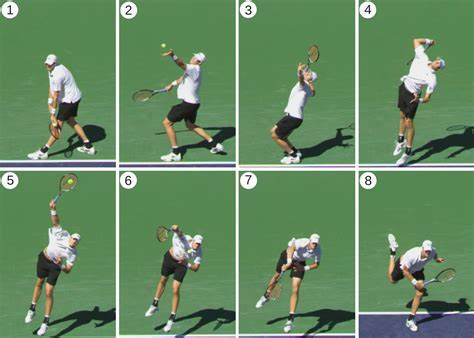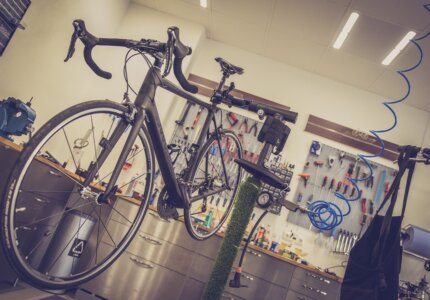Athletes and coaches are consistently looking for ways to optimize peak performance, this can come through enhanced recovery techniques, strength and conditioning, skills and repetition training, sports nutrition etc. However, one area that is often overlooked is sports psychology which can include, mental skills training to help build mental toughness and develop strategies to cope with the stress and mental demands of sport, as well as mental imagery (MI).
What is Mental Imagery?
Although there are various definitions for MI, it essentially refers to an intentional mental representation of the motor skills used to perform a task without physically engaging in that task. In short, it is “using all the senses to create or recreate an experience in the mind“, this might be a free throw in basketball, a serve in tennis, a lap in motorsport, a maneuver on a wave in surfing, lifting a weight, or kicking a goal in football etc. Additionally, this process involves kinesthetic imagery; that is the process of imagining the physical movements, the weight, the forces and effort required to execute that moment. Mi is often performed from 2 different perspectives; internal or a first person perspective of actually undertaking the task/movement; and external or from a third person perspective such as watching a video of someone performing the task/movement.

MI is often used either as a replacement for training during periods of downtime due to injury, travel, a religious event, unavailability of appropriate training equipment/facilities etc or as a supplement to help rehearse or learn a new movement pattern. The power of MI is it allows one to visualize a movement perfectly every time, something that is not possible in real life as mistakes, even little ones will routinely be made.
As a melbourne sports chiropractor we have extensive experience working at the tennis Australian Open in Melbourne, we will show you how MI is performed using a tennis serve as an example. You would sit in a quiet calm place with eyes closed, imagining the feeling of the court surface beneath the feet, the flow of the air across the body, the weight of the tennis racquet in hand, the feel and texture of the ball, the force and specific movements of the muscles bending from the ankles, knees, hips, starting to rotate the body, lifting the racquet up and over head, while starting to the throw the ball into the air, picturing exactly where you want the ball toss to go, extending the back and then whipping the racquet through, contacting the ball at the exact right time and position, feeling the clean impact the ball makes with the racquet, hearing the crisp snap of the ball on the strings and the release of energy and air from the lungs as the body rotates and movements forward into the court and the racquet follows through, watching the ball fly just over the net tape, landing directly on the centre T line.
How does Mental Imagery Work?
There are several theories on the psychoneurophysiological mechanisms by which MI works however, some of the key themes underpinning MI include, neural changes in the primary somatosensory and motor areas, augmented spinal circuitry, and similar task-specific EMG patterns and subliminal muscle activity. Furthermore, there has been research showing internal MI results in improved strength performance as a result of higher muscle excitatory activity compared to external MI. Moreover, the neuromuscular responses evoked from MI are intensity and activity dependent.
Although there is not a clear association at present, it would appear that there are different scenarios were internal MI is superior to external MI and vice versa. External MI has been found to effective for form-based tasks, while internal MI has been shown to be superior to external MI for goal-directed tasks or motor skills involving changes in the visual fields. In simple terms, external MI works by promoting an association between movements and their effects (ie. by watching a top spin serve it is possible to see the movements required to execute the serve and to see how the ball moves across the net and court). Whereas internal MI creates a link between the movement and the tactile and kinesthetic sensations (ie. by performing a top spin serve in the mind, it is possible to recreate the muscle activation/movements, the energy required, the feel of the ball impacting the racquet etc).
Why Use Mental Imagery?
MI has been shown to be an effective tool for enhancing motor skills and motor performance with results seen after either one single sessions of MI training or after longer term MI training. Additionally, whether your are a novice or expert it is an effective way to learn or refine a new technical skill. To provide context for the benefits of MI use in sports performance, below is a short list of studies examining MI use across different sports.
- Dance – MI is used by all ages and levels but is used more frequently in higher skilled dancers to enhance their movements and/or to help practice or develop a routine.
- Tennis – a small study looking at elite youth players revealed MI with physical practice improved serve accuracy, velocity and consistency (higher % of successful first serves).
- a study of 38, young male players fasting during Ramadan showed MI improved serve accuracy, running speed and performance compared to a control group (no MI).
- Golf – a study of 23 beginner golfers split into 3 groups (MI + practice, practice only, control) found participants in the MI + practice group were significantly more accurate with more balls landing closer to a target using an approach chip shot than the other two groups.
- Soccer – a study of 69 elite soccer players showed improvements in successful pass rates in competition matches in the MI group when compared to the control group (no MI).
- Basketball – a study of 38 elite basketball players revealed MI increased maximal strength and power motor performance compared to controls (no MI) over a 6 week training period.
- a study of 81 youth basketball players showed improved free throw accuracy in the MI group when compared to the control (practice only group).
- Rehabilitation – a systematic review of MI on muscle strength in healthy participants shows MI with physical practice is more efficient or comparable to physical practice alone with respect to strength performance. Additionally, MI helped to reduce strength loss following short periods of immobilization. Furthermore, internal MI has a greater effect on strength than external MI.
When to Use Mental Imagery?

As the studies above show there are two key areas where MI can augment sports performance; during periods of immobilization or injury, where MI can help attenuate the strength loss associated with detraining or immobilization, enabling an individual to retain a higher strength base compared to someone who does not use MI, theoretically resulting in a faster return to play time. As well as being used to improve motor control and muscle memory skills, helping to improve performance whether that be a serve in tennis, a pass in soccer, a free throw in basketball, or a shot in golf.
Furthermore, MI can be used to help visualize an outcome or result. Motor racing pilot and author Ross Bentley discusses this in his book series “Speed Secrets” where he dedicates an entire book to the mental aspects of racing. In it he discusses MI and asks readers to visualise themselves on the starting grid of a race; where do you see your self, 5th, 3rd, 2nd? Are there cars in front of you? Are you on the inside or outside of the racing line? You always want to visualise yourself 1st, as visualizing anything else is only programming yourself to be less successful. Even if the likelihood of being winning looks impossible, visualizing it puts you in a position to perform at your best.
How to Implement Mental Imagery in Sport?
One of the difficulties in reviewing the literature on MI is the lack of a standardized MI protocol, with variance in the duration of the MI program, how many times per week MI was undertaken, for how long and when. Generally speaking programs in the studies above ran for 3 to 8 weeks, were undertaken 1-3 times per week and lasted for 5-15 minutes. Knowing that improvements have been noted even after 1 session of MI, at a minimum one 15 minute session per week of MI combined with routine physical practice if you are wanting to perform at your best. From our experience as a sports chiropractor working with athletes across a variety of sports MI is under utilized, so if you are looking for that extra advantage over your opponents or are wanting to improve faster, MI is a simple, fast and easy addition to your training program.
If you are looking for more information on the mental side of sport, you might find our blog on burnout of interest and if you would like to make an appointment to see one of our clinicians to help with your performance you can book a remedial massage or sports chiropractic below. Our practice is conveniently located on the corner of Collins Street and Swanston Street in the Melbourne CBD.



